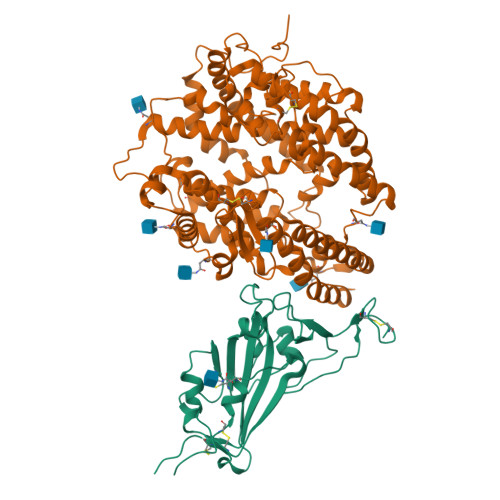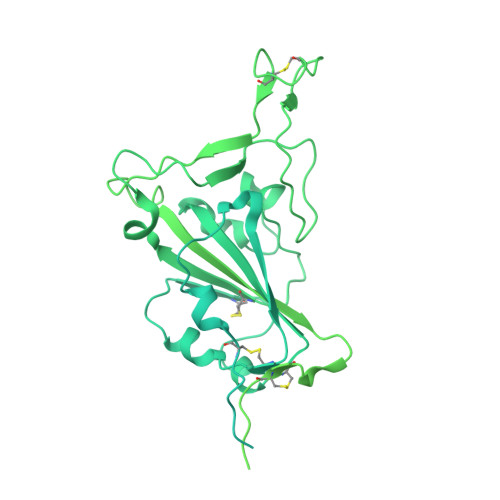Computational pipeline provides mechanistic understanding of Omicron variant of concern neutralizing engineered ACE2 receptor traps.
Remesh, S.G., Merz, G.E., Brilot, A.F., Chio, U.S., Rizo, A.N., Pospiech Jr., T.H., Lui, I., Laurie, M.T., Glasgow, J., Le, C.Q., Zhang, Y., Diwanji, D., Hernandez, E., Lopez, J., Mehmood, H., Pawar, K.I., Pourmal, S., Smith, A.M., Zhou, F., DeRisi, J., Kortemme, T., Rosenberg, O.S., Glasgow, A., Leung, K.K., Wells, J.A., Verba, K.A.(2023) Structure 31: 253
- PubMed: 36805129
- DOI: https://doi.org/10.1016/j.str.2023.01.009
- Primary Citation of Related Structures:
8DV1, 8DV2 - PubMed Abstract:
The SARS-CoV-2 Omicron variant, with 15 mutations in Spike receptor-binding domain (Spike-RBD), renders virtually all clinical monoclonal antibodies against WT SARS-CoV-2 ineffective. We recently engineered the SARS-CoV-2 host entry receptor, ACE2, to tightly bind WT-RBD and prevent viral entry into host cells ("receptor traps"). Here we determine cryo-EM structures of our receptor traps in complex with stabilized Spike ectodomain. We develop a multi-model pipeline combining Rosetta protein modeling software and cryo-EM to allow interface energy calculations even at limited resolution and identify interface side chains that allow for high-affinity interactions between our ACE2 receptor traps and Spike-RBD. Our structural analysis provides a mechanistic rationale for the high-affinity (0.53-4.2 nM) binding of our ACE2 receptor traps to Omicron-RBD confirmed with biolayer interferometry measurements. Finally, we show that ACE2 receptor traps potently neutralize Omicron and Delta pseudotyped viruses, providing alternative therapeutic routes to combat this evolving virus.
Organizational Affiliation:
Department of Pharmaceutical Chemistry, University of California, San Francisco, San Francisco, CA 94158, USA; QBI Coronavirus Research Group Structural Biology Consortium, University of California, San Francisco, San Francisco, CA 94158, USA.




















